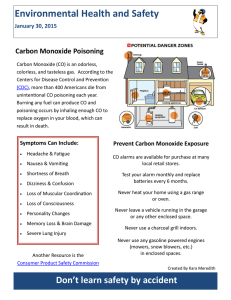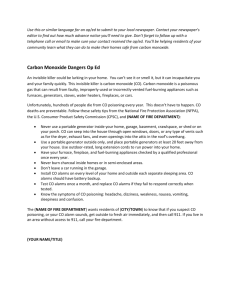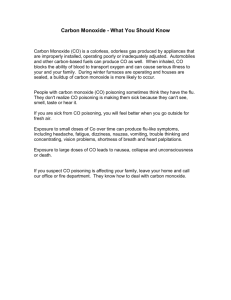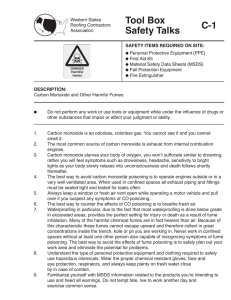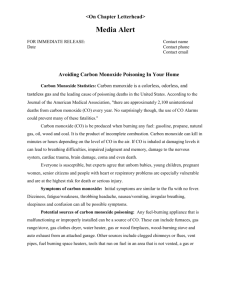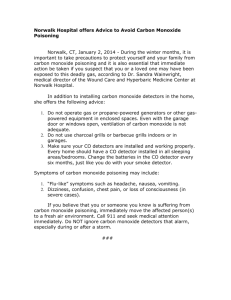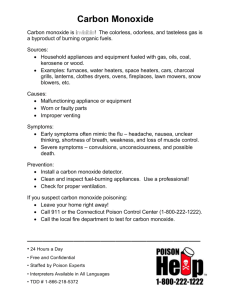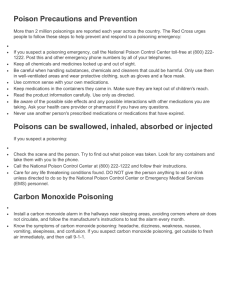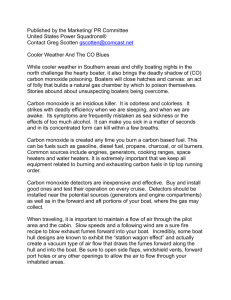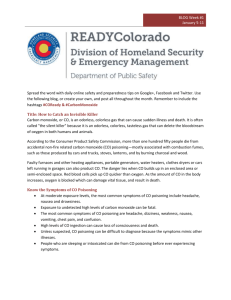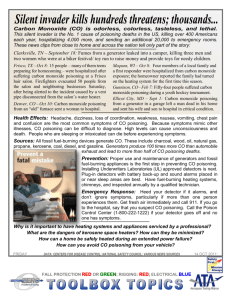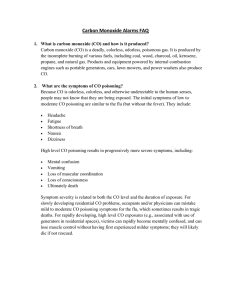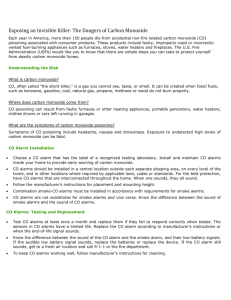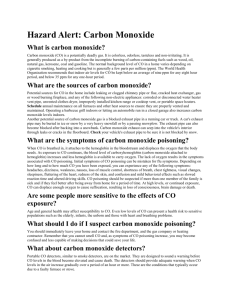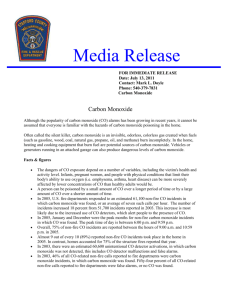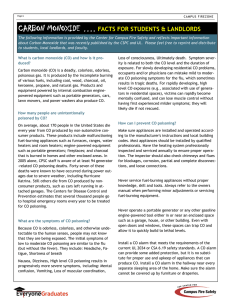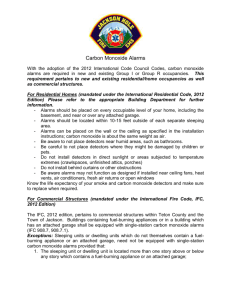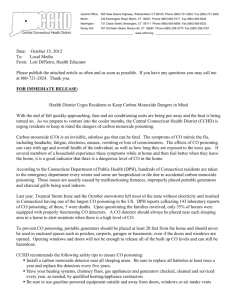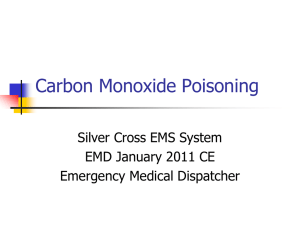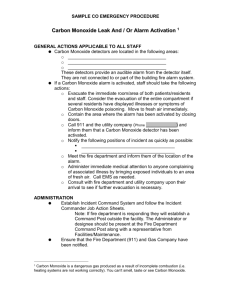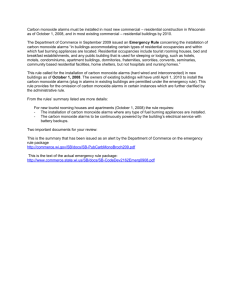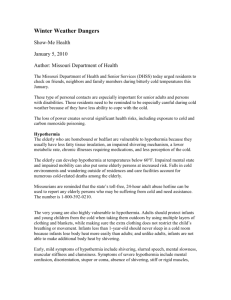Click here for more information
advertisement
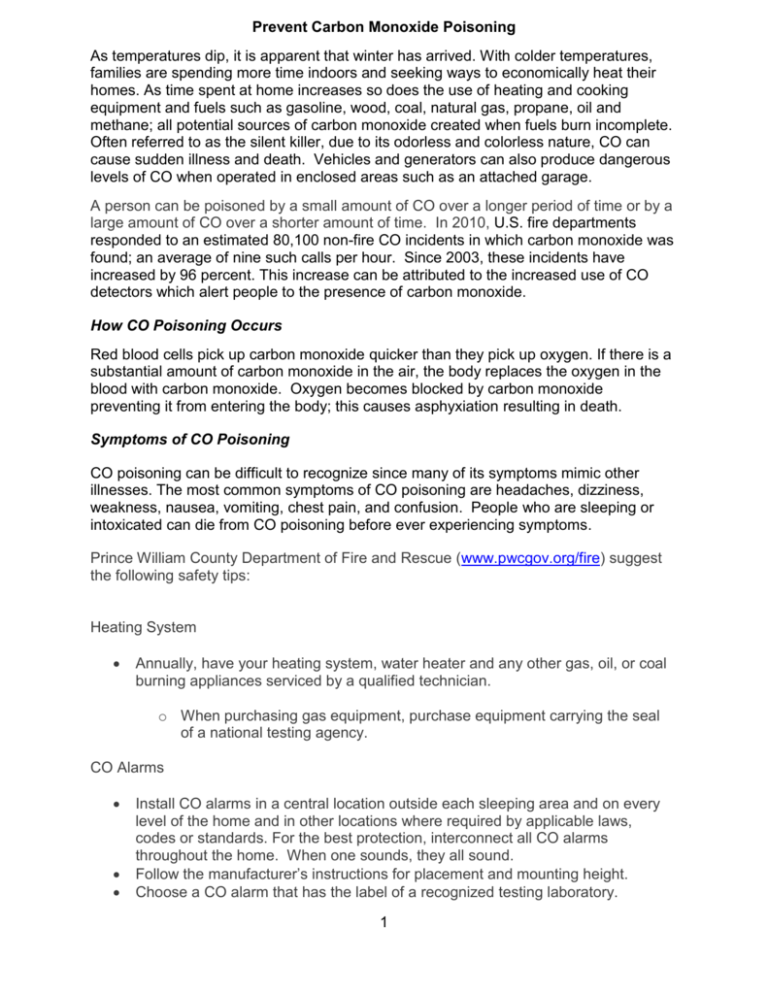
Prevent Carbon Monoxide Poisoning As temperatures dip, it is apparent that winter has arrived. With colder temperatures, families are spending more time indoors and seeking ways to economically heat their homes. As time spent at home increases so does the use of heating and cooking equipment and fuels such as gasoline, wood, coal, natural gas, propane, oil and methane; all potential sources of carbon monoxide created when fuels burn incomplete. Often referred to as the silent killer, due to its odorless and colorless nature, CO can cause sudden illness and death. Vehicles and generators can also produce dangerous levels of CO when operated in enclosed areas such as an attached garage. A person can be poisoned by a small amount of CO over a longer period of time or by a large amount of CO over a shorter amount of time. In 2010, U.S. fire departments responded to an estimated 80,100 non-fire CO incidents in which carbon monoxide was found; an average of nine such calls per hour. Since 2003, these incidents have increased by 96 percent. This increase can be attributed to the increased use of CO detectors which alert people to the presence of carbon monoxide. How CO Poisoning Occurs Red blood cells pick up carbon monoxide quicker than they pick up oxygen. If there is a substantial amount of carbon monoxide in the air, the body replaces the oxygen in the blood with carbon monoxide. Oxygen becomes blocked by carbon monoxide preventing it from entering the body; this causes asphyxiation resulting in death. Symptoms of CO Poisoning CO poisoning can be difficult to recognize since many of its symptoms mimic other illnesses. The most common symptoms of CO poisoning are headaches, dizziness, weakness, nausea, vomiting, chest pain, and confusion. People who are sleeping or intoxicated can die from CO poisoning before ever experiencing symptoms. Prince William County Department of Fire and Rescue (www.pwcgov.org/fire) suggest the following safety tips: Heating System Annually, have your heating system, water heater and any other gas, oil, or coal burning appliances serviced by a qualified technician. o When purchasing gas equipment, purchase equipment carrying the seal of a national testing agency. CO Alarms Install CO alarms in a central location outside each sleeping area and on every level of the home and in other locations where required by applicable laws, codes or standards. For the best protection, interconnect all CO alarms throughout the home. When one sounds, they all sound. Follow the manufacturer’s instructions for placement and mounting height. Choose a CO alarm that has the label of a recognized testing laboratory. 1 Call your local fire department’s non-emergency number to find out what number to call if the CO alarm sounds. Test CO alarms at least once a month; replace them according to the manufacturer’s instructions. o If the audible trouble signal sounds, check for low batteries. If the battery is low, replace it. If it still sounds, call the fire department. o If the CO alarm sounds, immediately move to a fresh air location outdoors or by an open window or door. Make sure everyone inside the home is accounted for. Call for help from a fresh air location and stay there until emergency personnel arrive. Vehicles If you need to warm a vehicle, remove it from the garage immediately after starting it. Do not run a vehicle or other fueled engine or motor indoors, even if garage doors are open. Make sure the exhaust pipe of a running vehicle is not covered with snow. Appliances During and after a snowstorm, make sure vents for the dryer, furnace, stove, and fireplace are clear of snow build-up. A generator should be used in a well-ventilated location outdoors away from windows, doors and vent openings. Gas or charcoal grills can produce CO — only use outside. For more information, visit National Fire Protection Association (NFPA) www.nfpa.org and Center for Disease Control (CDC) www.cdc.gov. 2
